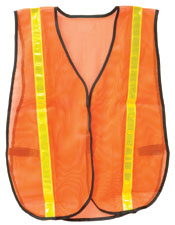Scene of the Accident.
“We try to take luck out of the equation,” says Speed, noting that Hancock does not introduce new concepts without thoroughly studying the safety aspect. For instance, after reviewing previous injuries and accidents, the dealer learned that some were the result of employees becoming distracted, particularly when taken out of their element, such as a yard employee being sent out on a delivery or operating an unfamiliar piece of machinery.
Employees who try to do too much worry Joe McCrea, senior vice president of claims for the Pennsylvania Lumbermens Mutual Insurance Co. Too often, he has seen accidents involving boom trucks or forklifts used for jobs that they weren’t meant for. “Either the training fell short, or simple programs were not followed,” McCrea says.
Drugs and alcohol use are cited as the blame for accidents as well. Marler recalls one dealer-member who was not concerned that one of his drivers had a habit of drinking a beer or two during his lunch break. Marler told the owner otherwise.
Tindell’s tests frequently for drugs and is a drug-free work zone, according to Ridings. Testing occurs before hiring and is rapidly becoming the norm, according to industry “help-wanted” ads. Riding says there have been instances where a good worker was told of an upcoming drug test. Rather than be fired, the employee never showed up for work again.
Just next to the door handle of Hammond Lumber’s pickups is a sticker that reads “Safety Begins Here,” a constant reminder of a primary goal at Hammond.
“We use to have a saying: ‘People don’t stay told,’ ” Marler says. “If they don’t have someone that is dedicated to safety–and a lot of them don’t –it gets pushed to the side and forgotten about.”
“You have to start at the top and ensure that the managers practice what they preach and they are really serious about safety,” Hayden says. “Nine times out of 10, your managers are not serious about safety at all.”
Six Safe Steps
All the dealers that spoke to ProSales about safety have several rules in common. Consider these steps for your business when employing best-practice solutions to safety management.
1. Buying In. Designate a manager, employee, or safety director who can oversee a program. That person can share trends and ideas, keep track of employee safety, and be a watchful eye within the company. The safety chief should be well informed of typical hazards that might occur in the yard, as well as OSHA requirements and key methods to prevent accidents.
2. Meet and Discuss. Whether you operate one or 100 yards, regularly discuss problems and solutions no less than monthly. Use the meetings to address safe and unsafe observations as well as prevention techniques. If you operate multiple yards, appoint a safety rep for each who can share information with employees.
3. Record and Report. Regardless of whether someone is doing something wrong or right, record it and report it internally. If an employee is found performing a job that could result in an injury–or worse–it should be stopped, logged, and then shared with others in a “how not to do something” manner. It could prevent an accident from occurring at another yard. Whoever is in charge of safety might make an occasional surprise inspection to see how others are doing their jobs. Are they driving and delivering products safely to jobsites? That does not mean lowering the boom and balling out an employee when a problem is spotted. Simple instruction and a reminder can do the job, unless it becomes a recurring problem.
4. Reward Good Work. If employees are doing their jobs correctly and without injury, reward them. Let it be a known as a goal that working days without injury or a recorded incident could lead to a steak barbecue, tickets to the movies, passes to the driving range–something that lets them know you appreciate the job they are doing and how they are doing it correctly. Consider a larger reward at the end of the year for the employee or crew with the best track record.
5. Stay Clean. A common cause of accidents and injuries is a yard that’s not kept clean and neat. Keeping the yard tidy can prevent incidents while conveying a professional image to contractor customers.
6. Remind. You don’t always need marathon meetings to remind employees of safety. At times, a few well-placed signs and slogans can work. Post reminders at key spots in the yard, such as on employee-required clothing, posters on walls, or overhead banners that many can see.
–Andy Carlo



